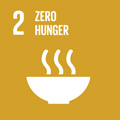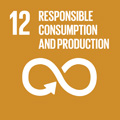- Docente: Diana Luise
- Credits: 6
- SSD: AGR/19
- Language: Italian
- Teaching Mode: Traditional lectures
- Campus: Bologna
- Corso: First cycle degree programme (L) in Land and Agro-Forestry Technologies (cod. 5831)
-
from Sep 23, 2024 to Dec 10, 2024
Learning outcomes
The student will learn the basic elements of monogastric and ruminant physiology, as well as concepts related to farming systems for the main livestock species. The student will acquire basic knowledge concerning intensive, semi-intensive, and extensive farming strategies, including “en plein air” systems, in order to contextualize these production systems within production objectives ranging from the preservation and management of the territory (e.g., marginal areas), to the safeguarding of native breeds and typical productions that characterize Italian livestock farming. The interaction between animals, farming systems, and the environment will be considered to provide a comprehensive view of the current concept of sustainability in livestock production. At the end of the course, the student will be able to evaluate, as a whole, a farming system and its suitability with ethical, social, and environmental sustainability goals.
Course contents
Introduction to the Animal Science course: presentation of contents and methods for assessment of learning.
Introduction to animal science and its link to environmental impact: overview of phenomena, livestock effluents and nitrate regulations; strategies to reduce environmental impact.
Basic anatomy and physiology of animals of zootechnical interest.
Organization of the pig production chain
- Production data and types of production
- Production cycle and farming types
- Main Italian breeds
- Basics of farrowing rooms, nursing, and piglet management
- Weaning and growth
- Transport phases and carcass quality
Organization of the beef cattle production chain
- Production data and types of production
- Main Italian and foreign breeds
- Growth and development
- Categories of beef cattle
- Slaughter yield and commercial classification of meat
- Notes on meat quality
Organization of the dairy cattle production chain
- Zootechnical objectives
- Main Italian breeds
- Calf management
- Puberty and development of reproductive function
- Lactation curve
- Milking techniques
- Farming in mountainous areas: main breeds, altitude ranges, stocking rate in summer pastures, supplementary feeding at pasture
Milk production from other species
- Sheep: farming systems, herd size and breeds, flock management, lactation and milking; milk composition
- Goats: farming systems, herd size and breeds, flock management, lactation and milking; milk composition
Overview of applications of precision livestock farming to various zootechnical realities
Readings/Bibliography
Lecture Notes
Textbook:"Produzioni Animali" Sandrucci e Trevisi, editore Edises, 2022
Teaching methods
Face-to-face lectures in the classroom, visits to farms, and seminars held by experts on topics that will be defined during the course.
Assessment methods
At the end of the course, a student assessment will be scheduled consisting of an oral exam. The oral exam aims to evaluate the acquisition of knowledge outlined in the course program related to the theoretical and practical topics covered during the lessons. Furthermore, the oral exam will assess the critical and methodological skills developed by the student.
The evaluation will be assigned according to the following criteria:
-
A very thorough knowledge of the topics addressed in the course, combined with high critical analysis skills, the ability to make connections, and confident mastery of specific terminology will be awarded the highest score (30-30L).
-
A deep knowledge of the topics addressed in the course, along with good analytical and critical skills and confident command of specific terminology, will be graded with good marks (27-29).
-
A technically adequate preparation and sufficient analytical ability, even if not particularly detailed, expressed in correct language, will result in satisfactory grades (23-26).
-
A sufficient preparation and analytical ability, expressed in language that is barely formally correct, will result in a passing grade (18-22).
Educational gaps, inappropriate language, or lack of orientation within the study material provided during the course will not be positively evaluated. Students who do not achieve a minimum score of 18/30 may request to retake the exam by registering for a subsequent exam session.
Access to the exam is open. The exam lasts at least 25 minutes, and no aids are allowed, except for students entitled to use them.
The dates, times, and locations/modes of the exams are published on the degree course website. To register for exam sessions, use the Alma Esami web application.
Teaching tools
Presentation of slides.
Visits to livestock farms.
Office hours
See the website of Diana Luise
SDGs



This teaching activity contributes to the achievement of the Sustainable Development Goals of the UN 2030 Agenda.
